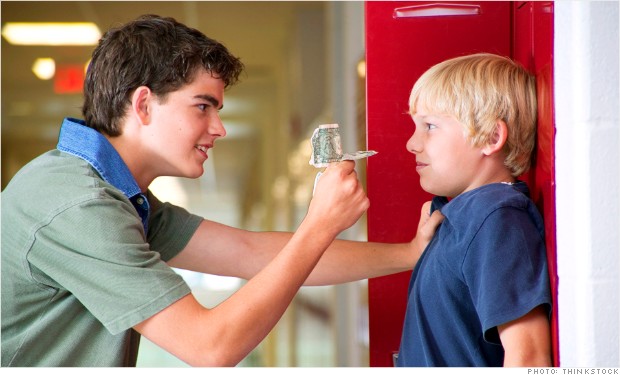Cyber Bullying More Difficult for Teenagers to Process Psychologically Than In-Person Bullying
Newswise — (Evanston, November 6 2013) – Much has been said about cyber
bullying, and how social media outlets have impacted the lives of teenagers.
However, how do these new methods of bullying and
torment differ from their face-to-face counterparts? In what ways do the teenagers on the receiving end of these bullying experiences process the experiences? At The Family Institute, an organization committed to strengthening and healing families from all walks of life through clinical service, education and research, mental health clinicians consider these questions as they treat their adolescent clients and their families.
“While social media can serve to augment peer relationships in adolescence, it can also provide a forum for negative exchanges that can be quite hurtful,” says Hollie Sobel, PhD, a Family Institute clinician who specializes in treating adolescent clients and their families.
“Teenagers can’t emotionally process these painful experiences in the same way they do their face-to-face equivalents. There aren’t the same opportunities to work it out online.”
Sobel lists a number of ways in which these online bullying experiences are different from those that happen in high school cafeterias or parties. For example, the victim can’t see the affect on the offender, and can’t see or feel the responses of people who may come to his/her aid, rendering that aid less resonant. Additionally, while there is a lack of authority to step in, the quick pace and lack of personal contact involved in cyber bullying allows for more people to join in the taunting in active ways they may not do in person. Negative statements made on-line are more pervasive than those made in person, with little escape.
“Despite these differences, however, a victim’s level of assertion doesn’t vary whether the bullying occurs online or in person,” says Dr. Sobel, who runs a therapy group for adolescents at The Family Institute in Evanston, IL. “The impact is just as resonant, only these incidents happen in the isolation of the Internet where social support, which is so important for coping, is absent.”
Recognizing these nuances is important to help teenagers cope with cyber bullying. At The Family Institute, Dr. Sobel considers these issues as she provides teenagers with the strategies and skills they need to cope with these experiences, as well as the issues of self-esteem, family relationships, peer pressure, and friendships so common in adolescence.
For more information about issues in adolescent cyber bullying, Dr. Sobel’s expertise, the Adolescent Group Therapy Program, or The Family Institute, please contact Colleen O’Connor at 312-609-5300, ext. 485 or coconnor@family-institute.org.
Source: Newswise
torment differ from their face-to-face counterparts? In what ways do the teenagers on the receiving end of these bullying experiences process the experiences? At The Family Institute, an organization committed to strengthening and healing families from all walks of life through clinical service, education and research, mental health clinicians consider these questions as they treat their adolescent clients and their families.
“While social media can serve to augment peer relationships in adolescence, it can also provide a forum for negative exchanges that can be quite hurtful,” says Hollie Sobel, PhD, a Family Institute clinician who specializes in treating adolescent clients and their families.
“Teenagers can’t emotionally process these painful experiences in the same way they do their face-to-face equivalents. There aren’t the same opportunities to work it out online.”
Sobel lists a number of ways in which these online bullying experiences are different from those that happen in high school cafeterias or parties. For example, the victim can’t see the affect on the offender, and can’t see or feel the responses of people who may come to his/her aid, rendering that aid less resonant. Additionally, while there is a lack of authority to step in, the quick pace and lack of personal contact involved in cyber bullying allows for more people to join in the taunting in active ways they may not do in person. Negative statements made on-line are more pervasive than those made in person, with little escape.
“Despite these differences, however, a victim’s level of assertion doesn’t vary whether the bullying occurs online or in person,” says Dr. Sobel, who runs a therapy group for adolescents at The Family Institute in Evanston, IL. “The impact is just as resonant, only these incidents happen in the isolation of the Internet where social support, which is so important for coping, is absent.”
Recognizing these nuances is important to help teenagers cope with cyber bullying. At The Family Institute, Dr. Sobel considers these issues as she provides teenagers with the strategies and skills they need to cope with these experiences, as well as the issues of self-esteem, family relationships, peer pressure, and friendships so common in adolescence.
For more information about issues in adolescent cyber bullying, Dr. Sobel’s expertise, the Adolescent Group Therapy Program, or The Family Institute, please contact Colleen O’Connor at 312-609-5300, ext. 485 or coconnor@family-institute.org.
Source: Newswise


Comments